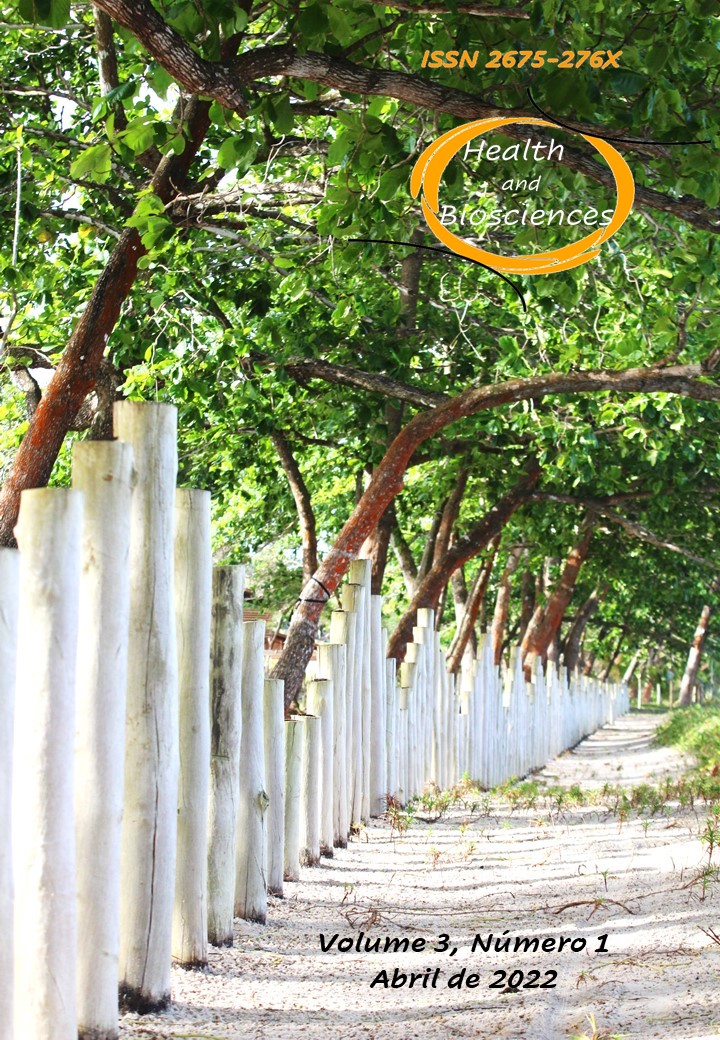Frequência de parasitoses intestinais em pacientes atendidos em um laboratório privado da cidade de Diamantina (Minas Gerais, Brasil)
Frequency of intestinal parasites in patients seen in 2016 and 2020 in a private laboratory in the city of Diamantina (Minas Gerais, Brazil)
DOI:
https://doi.org/10.47456/hb.v3i1.37911Keywords:
Saúde Coletiva, Parasitoses Intestinais, Inquérito Parasitológico, DiamantinaAbstract
This study aimed to evaluate the frequency of intestinal parasites in patients treated by a private clinical laboratory in the city of Diamantina, Minas Gerais, and determine the main parasites found, correlating them with the age and sex group. The parasitological exams analyzed were performed in 2016 and 2020 by the methods of spontaneous sedimentation (Hoffman), Faust and Willis. Among the 6,466 parasitological tests analyzed, 874 (13.52%) presented eggs or cysts of intestinal parasites, with Entamoeba histolytica (44.46%), Entamoeba coli (31.96%) and Giardia lamblia (19.21%) being the more frequent. The female gender had a higher percentage of positivity (52.40%), although there was no statistically significant difference for men (p=0.16), with Entamoeba histolytica being the most frequent parasite. The age group with the highest number of infected individuals were children 0-10 years (24.49%), with the prevalence of the parasite Giardia lamblia. As for cases of polyparasitism, the most common association was Entamoeba coli and Entamoeba histolytica. Intestinal parasitic infections continue to be frequent in the population and, if untreated, constitute a serious public health problem, making it necessary to implement health education measures and control strategies for these parasites.

